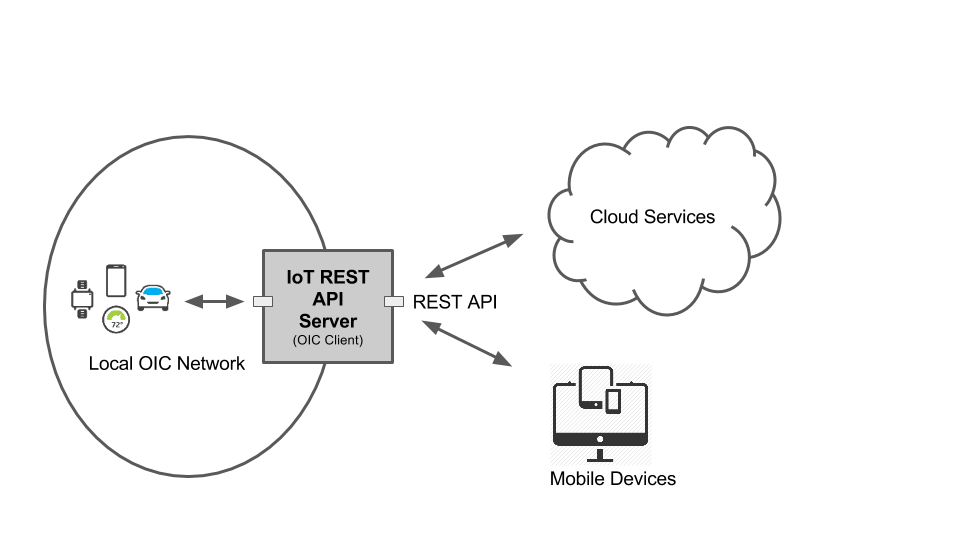IoT REST API Server
Description
This project provides node.js based REST API server accoring to the OIC (Open Interconnect) core specification.
The project is experimental at the moment and APIs provided are work in progress and subject to changes.
Install
npm install node-gyp -g
git clone https://github.com/01org/iot-rest-api-server.git
cd iot-rest-api-server
npm install
Usage
Start the API server
node index.js
Command Line Options
The command line options
node index.js -h
Options
-h, --help
-v, --verbose
-p, --port number
-s, --https
verbose
More verbose logging
port
Listen to specifc port. Default is 8000
https
Use https with TLS instead of plain http. In order to use https the config directory needs to contain the following certificate and private key files (in PEM format)
certificate.pem
private.key
You can use the config/generate-key-and-cert.sh to generate the files for testing only purposes. The certificate is self signed and browsers do not regognise it so you will get warnings.
The recomemnded way to use the https is to get proper certificate from know certificate authority and corresponding private key and place those to the config directory.
API End Points
/api/system
/api/oic
API documentation
The REST APIs are documented in the /doc folder using the RAML modeling language. You also need the raml2htmlnode module to produce the documentation:
npm install -g raml2html
The API documentation can be generated
raml2html doc/name-of-the-raml-file > api.html
For example
raml2html doc/oic.wk.res.raml > oic-res.html
The .html file can be then opened by a browser. The .htmlfile contains the full documentation of the REST API including all the REST methods (GET, POST, DELETE, etc) supported, query parameters (like ?id=foo) and the JSON formats in each API.
Examples
The following examples assumes your IoT OS enabled device runs on IP address: 192.168.0.1
Get the system status:
http://192.168.0.1:8000/api/system
Discover all the OIC enabled devices on the local network:
http://192.168.0.1:8000/api/oic/res
See the more detailed API documentation in the chapter above.
Tests
The test directory contains the following small test utilities:
oic-get
Send HTTP GET to /api/oicendpoint. Environment variables API_SERVER_HOST and API_SERVER_PORT are used to construct the authority part of the URL.
export API_SERVER_HOST=10.211.55.3
# Discover
./test/oic-get /res
# Retrieve (href and di are from the discovery above)
./test/oic-get <href>?di=<di>
# Observe
./test/oic-get <href>?di=<di>&obs=1
```
### oic-put
Send HTTP PUT to ```/api/oic```endpoint. Environment variables API_SERVER_HOST and API_SERVER_PORT are used to construct the authority part of the URL. First parameter is ``ùri``` from the discover (```/res```) and second is JASON files with the properties that are being set.
API_SERVER_HOST=10.211.55.3 ./test/oic-put ?di=
### oic-api-tester
Performs the OIC discovery. On discovered resources performs a) GET or b) OBSERVE operations
./test/oic-api-tester.js -? ./test/oic-api-tester.js -h 10.0.0.1 -p 8000 -o # start observing all found resources
## Tips
If you are running Chrome and want to see the JSON objects in nicely formated way, install the JSONView extension.
Another great tool for REST API development and testing is Postman, another Chrome extension.
